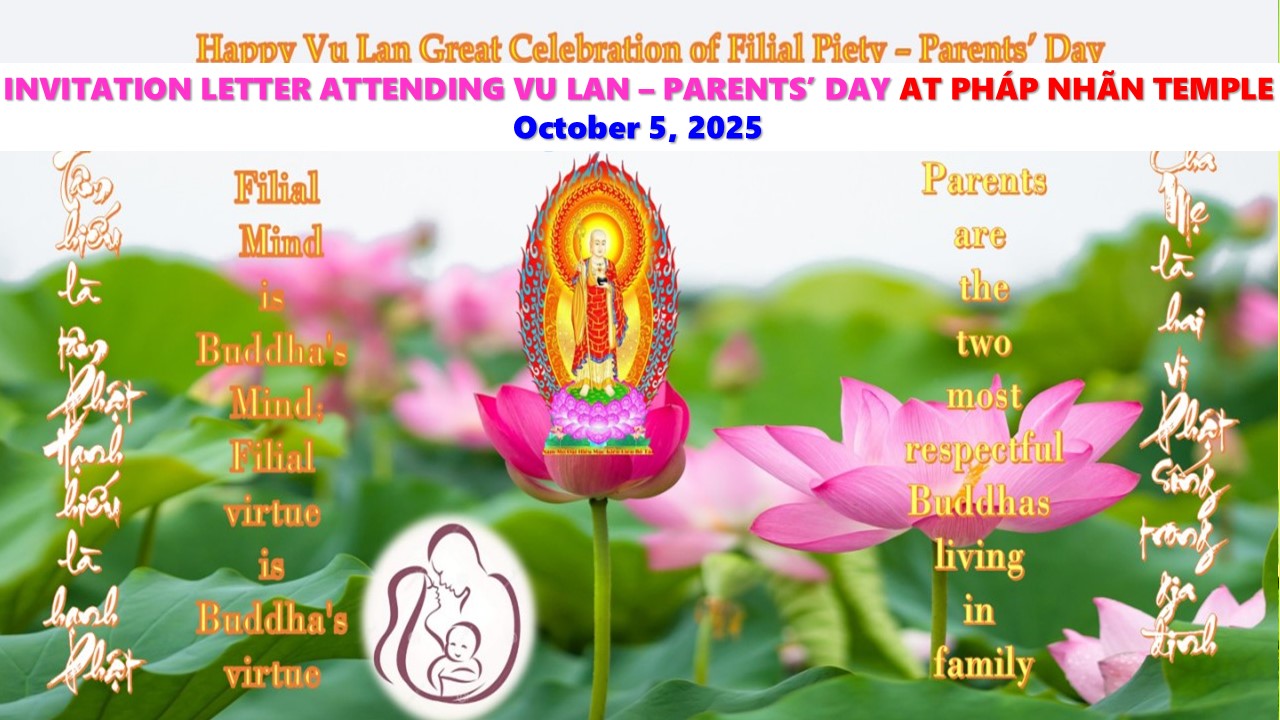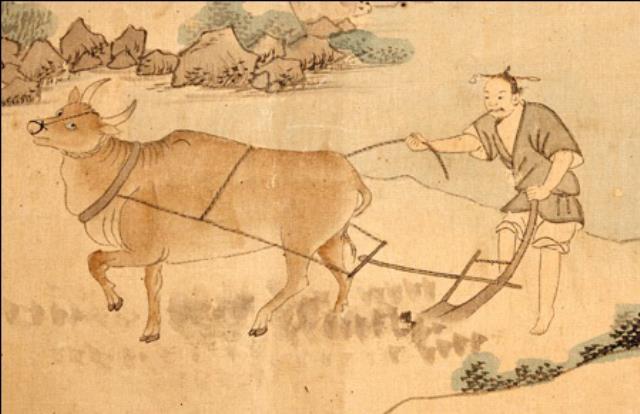
DISCOURSE ON TEACHING THE ELEVEN
METHODS OF HERDING BUFFALOES
Ekottarãgama Volume 3, number 49.1
Majjhima Nikāya No. 33 & 34
The World-Honored One was staying at the Jetavana Monastery offered by Suddata Anathapindika and Prince Jeta. On a beautiful day, the Buddha gathered and taught his disciples the following methods of controlling the body and mind to beautify oneself and other people through the eleven methods of herding buffaloes as follows.
1. Good buffalo herders must know to recognize the colors of the buffaloes clearly. Likewise, good cultivators must know to clearly recognize the four great elements including earth which represents solids (such as bone, teeth, nails, etc.,), water – liquids (blood, saliva), fire – temperatures, warmth, wind – motions (such as in-breaths and out-breaths), and interrelating very closely to the five bodily and mental aggregates which consist of body, sensation, perception, mental formations, and conscious awareness to clearly see the essence of the hot, the cold, sickness, impurity, birth, aging, death, suffering, impermanence, interdependent arising, interdependent origination, and non-self.
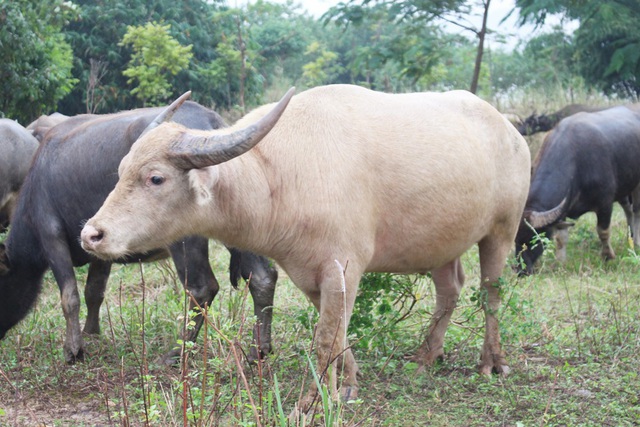
2. Good buffalo herders must know to distinguish and select the good and bad, strong and weak, good and evil forms of buffaloes. Likewise, good cultivators must differentiate and select between good and bad karma, dark and light karma, old and new karma, good and evil karma of their bodies, speeches, and minds created by themselves. The good, wholesome, and bright karmas continue to maintain and develop, on the contrary, the bad, evil, unwholesome, and dark karmas are determined to stop, eliminate, and transform.

3. Good buffalo herders must know how to scrub and wash the buffalo. Likewise, good cultivators must know how to take care of both physical and mental health, absorb and select healthy news for the body, mind, and recognize and transform habits of greed, anger, ignorance, violence, hatred, know to repent, perform penitence, and correct mistakes made.
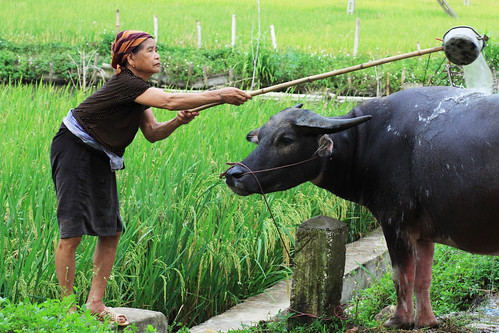
4. Good buffalo herders must know how to anoint and bandage the buffalo’s wound to avoid being bitten and stung by mosquitoes. Likewise, good cultivators must know how to uphold the six sense bases/ organs: eyes, ears, nose, tongue, body, and mind when touching the six sense objects; color/form or visible objects, sound, odor, flavors, tangible objects, and mental objects so that their bodies and minds will not be distracted and dominated. Six sense bases have two different kinds that are called six sense internal bases and six sense external bases contact six sense objects arouse six consciousnesses:

Ayatana means “sense base,” “sense-media” or “sense sphere.”
Eye/ sight in contact with color/form or visible objects (visual) (rapa-ayatana) that generate eye-consciousness
Ear/ hearing in contact with sound (auditory) (abda-ayatana) that generate ear-consciousness
Nose/ smell in contact with an odor (olfactory) (gandha-ayatana) that generate nose-consciousness
Tongue/ taste in contact with flavors (gustatory) (rasa-ayatana) that generate tongue-consciousness
Body/ touch in contact with tangible objects (tactile, haptic) (spara-ayatana) that generate body-consciousness
Mind in contact with mental objects (mano-ayatana) that generate mind-consciousness.
5. Good buffalo herders must know how to use straws or other things to smoke for the buffaloes so that the buffaloes will not be bitten by mosquitoes, know how to bathe buffaloes, to milk buffaloes, and know how to cut grass for buffaloes to eat when they are sick. Likewise, good cultivators must know how to practice, nurture, and develop Virtue, Meditation, and Wisdom in order to avoid unhappiness and suffering, and they themselves radiate a rich fragrance to benefit other people by the spirit of engaging in life, commitment, and service to the many right in the present life.
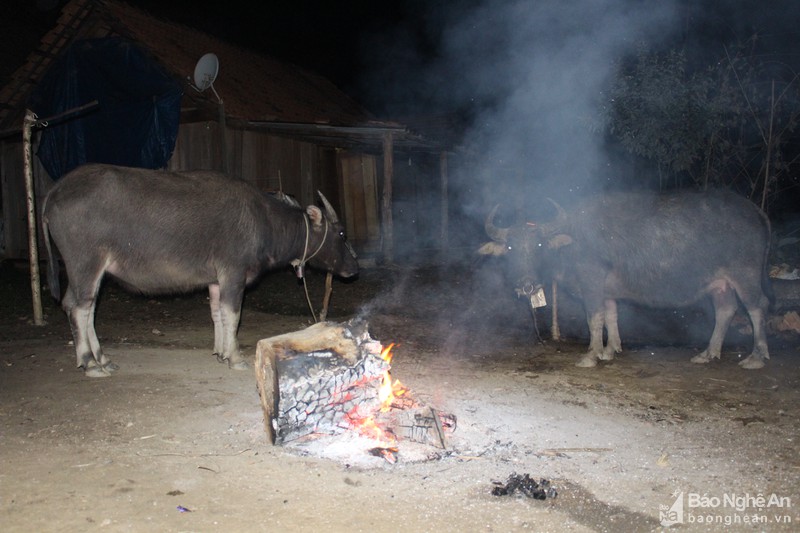
Using straws or other things to smoke for the buffaloes

Cutting grass for the buffaloes to eat
6. Good buffalo herders must know how to find a safe way for buffaloes to go. Likewise, good cultivators must know how to choose the noble path with the eight methods of right and safe cultivation for themselves to walk, stand, lie down, sit, speak, apply, and practice the Buddhadharma stably in everyday life towards authentical peacefulness and happiness right in the present life to avoid participating in violent places, bars, pubs, casinos, etc.

7. Good buffalo herders must know how to love the buffalo by finding a suitable place for the buffalo to live in. Likewise, good cultivators must cherish this physical body in order to practice and benefit the family, the school, and the whole society by relying on mindful breathing, loving speech, and cute act for many people. Moreover, good cultivators must know how to treasure the gifts of joy and happiness brought by their own study and practice, not granted by a supreme divine being. While studying the Dhamma, listening to the Dharma, and understanding the Dharma, we generate a joyful mind that believes, accepts, applies, and practices the Buddhadharma in everyday life to benefit other people. From mature and ripe practice, Dharma joy, Dharma study, Dharma practice, and Dharma happiness have the ability to permeate and cool the body and mind.

8. Good buffalo herders, who must know how to find a good wharf for the buffalo across a river, know how to give small buffaloes to take refuge in big buffaloes to cross the river safely and the big buffaloes leading the example for the small buffaloes to follow. Likewise, good cultivators must learn, develop, maintain, and develop the Four Noble Truths to make the stable foundation and key factor for them to live a noble, holy, peaceful, and happy life. Good cultivators know how to take refuge in good intellectuals, elders, highly moral and virtuous people to learn good things from them and request them to enlighten themselves with good things for them to promote and mistakes for me to correct. Adults live exemplary lives for young people to follow.
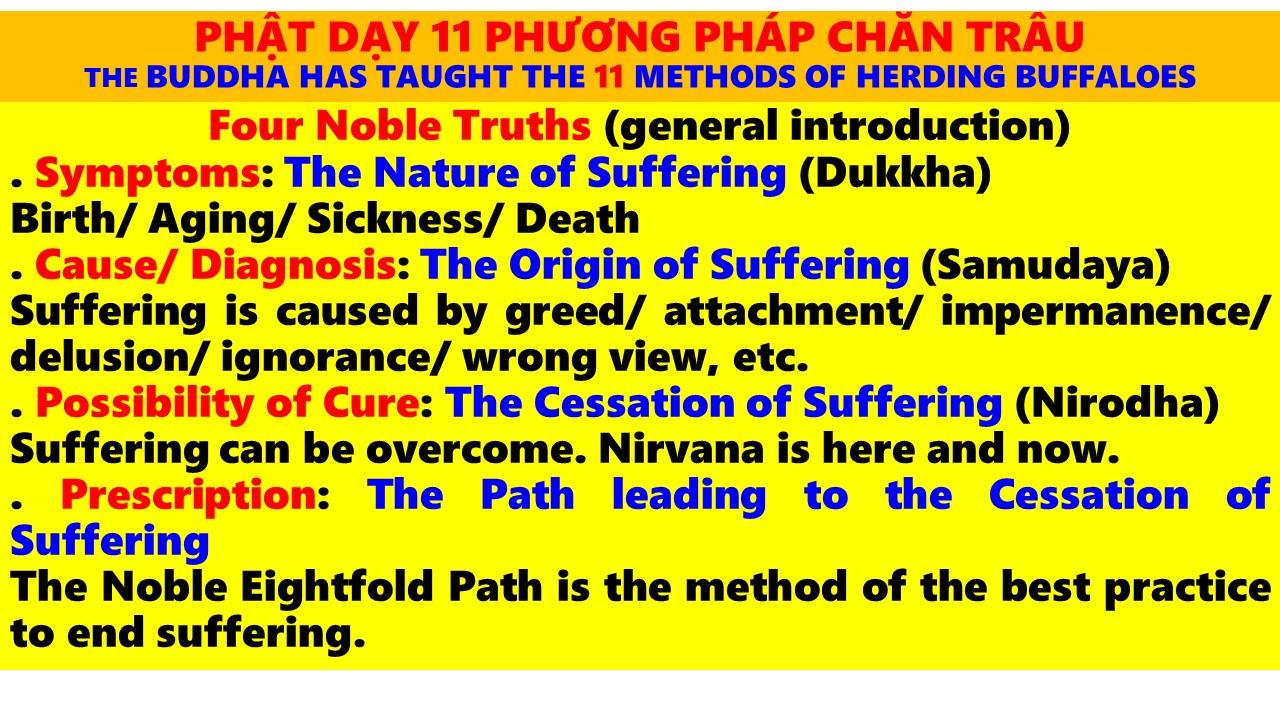
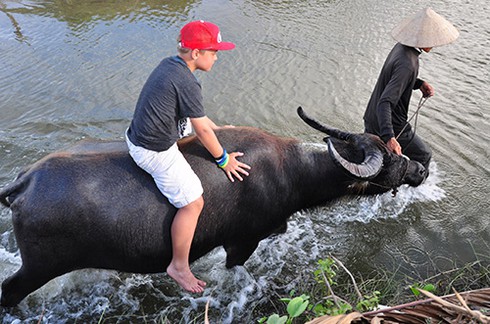
Finding a good wharf for the buffalo to cross a river safely
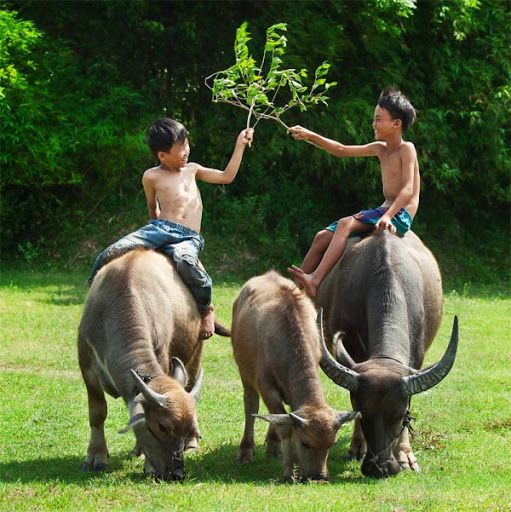
Guiding small buffaloes to take refuge in big buffaloes
9. Good buffalo herders must know to find water fields for buffaloes to drink and green pastures for buffaloes to eat. Likewise, good cultivators must find out the four fields of contemplation: Contemplation of body, contemplation of feeling, contemplation of mind, and contemplation of mental objects making the headings of samadhi meditation and vipassana meditation to help them see themselves clearly and see the characteristics of all things clearly.

Finding green pastures for buffaloes to eat
10. Good buffaloes herders must know how to milk the mother buffaloes moderately so that the mother buffaloes still have milk to feed the baby buffaloes. The good buffaloes herders know how to keep the buffaloes with their reins, do not let the buffaloes trample and destroy other people’s fields and gardens. Likewise, good cultivators have to know how to accept and raise the offerings from almsgivers moderately so that the almsgivers still save their property and materials to take care of their families and loved ones.

The mother buffalo still has milk to feed the baby buffaloes

The four things make offerings to monastic people by almsgivers often consist of food and drinks/ medicine/ clothing and sleeping things,/ and means of transportation.
As good cultivators, monastic people are fully aware that if the good things almsgivers make offerings to monastic people, then monastic people should not arouse a greedy mind. Conversely, if the non-good things almsgivers make offerings to monastic people, then monastic people are fully aware not to arouse a disparaging mind.
Moreover, good cultivators must know how to take care of and protect their bodies and minds from harming other people by practicing the five ethical trainings fully.
To stably keep the right confidence for almsgivers, practitioners should not take advantage of the donors’ devout belief to seek profits for the individual. Good practitioners must know to estimate or think about their amount of strength and virtuous merit when receiving the offerings from almsgivers. What almsgivers make offerings, practitioners skillfully use the offerings from the almsgivers to benefit many people, such as doing charity, helping poor students be fond of study, building houses of gratitude, Temples, printing Scriptures, etc.
11. Good buffalo herders know how to take care of the top buffaloes not to let them be sick and emaciated. Likewise, good cultivators must know to serve, make offerings, respect, and esteem highly moral and virtuous Elders in order to learn about good experiences from them. They are ancient trees with the ability to shade the descendants and young generation. We should not consider them as weak Elders who do not help something for youths, we will lose the merit and blessings. Taking stable refuge in the Elders, we can learn good things from them and request them to enlighten ourselves with good things for us to promote and mistakes for us to correct. The Elders are both noble spiritual fulcrums and live their exemplary lives for younger generations to follow.

Know to serve, make offerings, respect, and esteem highly moral and virtuous Elders
The proficient cultivators study and practice these eleven things above mentioned well, they are the very buffalo herders with the ability to herd and master their own mind buffaloes maturely, intelligently, and skillfully. They have the ability to identify and transform black buffaloes into white buffaloes, and unwell-tamed buffaloes yet into well-tamed buffaloes. When understanding and practicing like this, they have the ability to reap the fruits and flowers of happiness and happiness for themselves and for other people right here in this world.
The eleven methods of herding buffaloes well preached by the Buddha himself to the buffalo herders in order to teach the disciples to know to herd and take care of their own mind buffaloes from incomplete people yet to complete and perfect people. Indeed, thanks to learning and practicing the Buddhadharma in daily life, we can identify and transform all kinds of black karmas into white karmas, bad karmas into good karmas to benefit ourselves and other people right now and right here in the present life.
Namo The Original Master Sakyamuni Buddhaya
Ten Photos of Herding Buffaloes in Meditation Study










Written and compiled by Ven. Thích Trừng Sỹ
Referring to the following websites
Trung Bộ 67/ Tăng Nhất A Hàm, Tập 3, số 49.1
Majhima Nikaya 67/ Ekottarãgama Volume 3, number 49.1
https://www.budsas.org/uni/u-kinh-aham-tang/tang3-5.htm
http://www.chinabuddhismencyclopedia.com/en/index.php?title=Six_sense_objects



